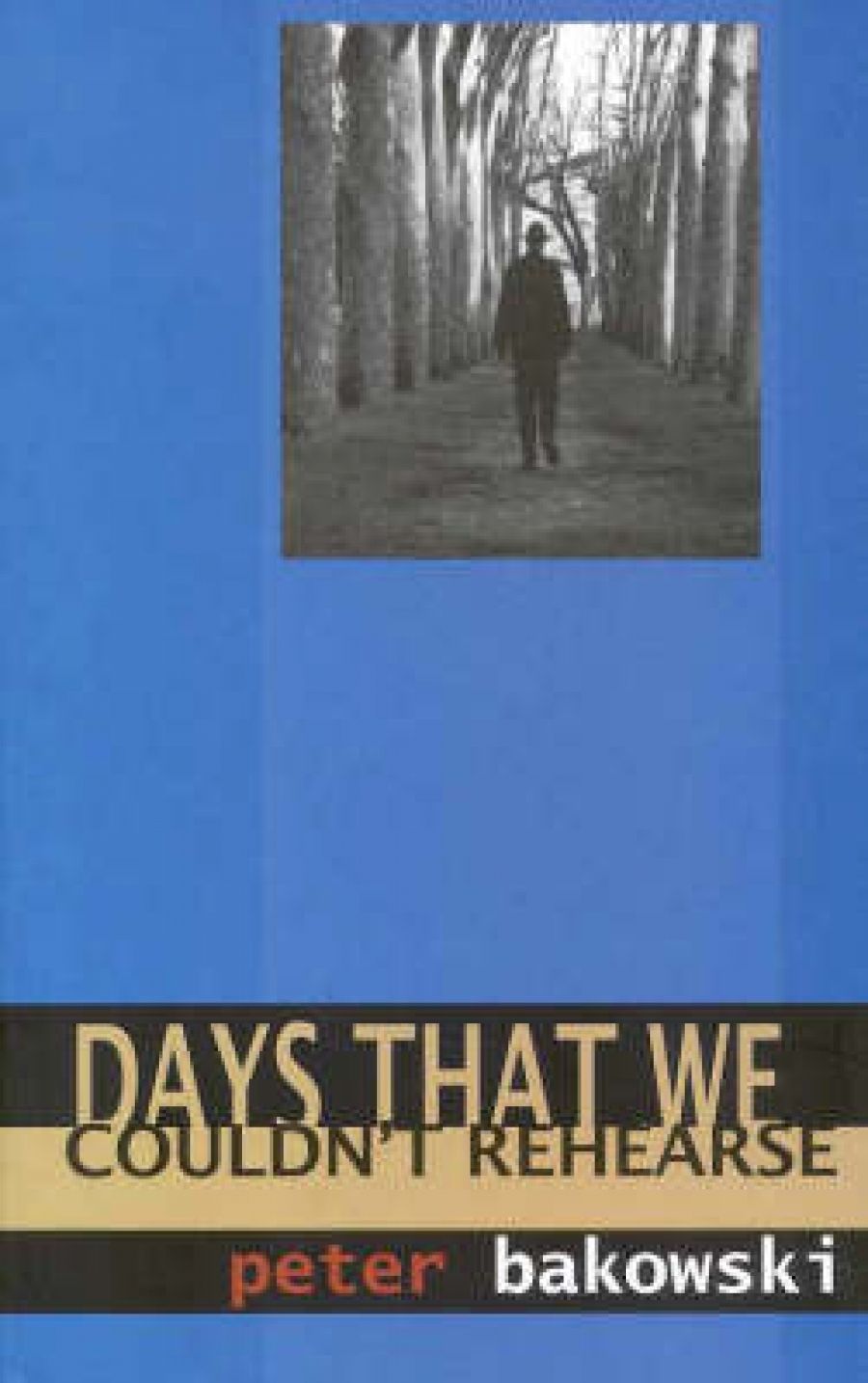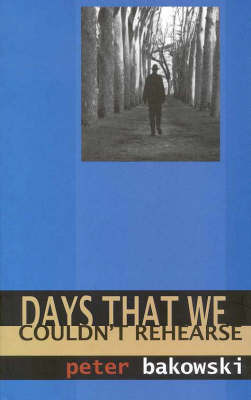
- Free Article: No
- Contents Category: Poetry
- Review Article: Yes
- Article Title: Bakowski's Strategic Dartboard
- Online Only: No
- Custom Highlight Text:
Peter Bakowski’s Days That We Couldn’t Rehearse is in many ways the most consistent and satisfying of his five collections to date. He has cultivated strengths and eliminated weaknesses found in earlier volumes. Yet it is unmistakably Bakowski; to mimic his much-loved crime fiction imagery, his prints are all over the scene.
- Book 1 Title: Days That We Couldn't Rehearse
- Book 1 Biblio: Hale & Iremonger, $21.95 pb, 72pp
- Book 1 Cover Small (400 x 600):

- Book 1 Cover (800 x 1200):

Dartboard, acrobat, balloon, fountain, kite: many of the nouns in the book could have been taken from a children’s dictionary, and this is part of the poet’s stratagem. It places him outside the more intellectual streams of poetic practice, but aligns him with figures such as the Yugoslav-born American Charles Simic and the early twentieth-century Czech Vitezslau Nezval. Does Bakowski’s ‘Moon Above the City’, with its pawnbroker, puddle, clock, camera, and tram, allude to Nezval’s ‘Moon over Prague’, with its acrobat, piano, Chinese lantern and inkwell? Perhaps not, but the styles and intents of the two poems are closely aligned. The Eastern European link is perhaps significant: Bakowski is partly of Polish descent.
The danger of an almost childlike eye is that imagery can circle the same old easy targets – ‘moon’, ‘night’, ‘winter’, ‘wind’ – and that the thought behind the words can fall into pat formulations, although Pasternak was able to write great and loved poetry on precisely such simple themes. When the targets turn abstract – ‘peace, / income, / love’ (‘Observations in the Year 2001’) – we should heed Pound and go in fear. These words are too easily glided over, and the effect is diluted. However, on the whole, Bakowski is showing signs of stripping down his language to a simple reliance on the concrete, the adequate natural symbol, and this marks a clear maturing of his style.
There is a spare directness in some of the work. ‘A letter from Sarajevo to London, 4 March 1994’ begins: ‘It’s not / a time for / strolling in the park. / A corpse drifts / in the ornamental lake.’ This is stronger and more concise language than appears in the earlier collections.
Bakowski’s The Neon Hunger (Oel Press, Canada, 2000) was dominated by crime-fiction-like narratives, and there is one such piece in the current book, ‘The Ballad of Rico and Verna’. It breaks up the collection nicely, and does contain some convincing lines, such as: ‘Verna was on the bed, / naked, / horizontal news.’
Bakowski’s sense of humour is allowed freer rein in his narratives, and this is a good thing, as it serves to counteract a tendency in some other pieces to adopt a pulpit tone: ‘I prefer / the bullied to the bullying, / wands to truncheons, / realism to patriotism.’ There is a fine line between the simple and the simplistic. This excerpt illustrates another Bakowski-ism: the list. At least five poems in this book use the list as their major structural element.
Stronger than the story poems or the my-view-of-life pieces are the more directly descriptive works rooted in experience. Possibly the strongest piece in the book is ‘The Children of Divorce’, which lays out a child’s perspective on the end of family. It concludes with a haunting dream-like image: ‘hearing the milkman / just before dawn / speaking / soft words / to his horse.’ This is not simple realism: a child in his room is unlikely to be able to hear soft words from the street; but it is a gentle surrealism that lifts the piece onto a new level.
‘Fly TAA, The Friendly Way’ is a convincing and entertaining depiction of a young man’s first job, in the early 1970s: the office dramatis personae are presented, and there’s an incident involving the smashing, after an eight rum-and-coke lunch, of the Ticket Revenue Department boss’s teapot.
Another Bakowski signature is the travel poem. Previous books (thunder road, thunder heart, Nosukumo,1988; In the human night, Hale & Iremonger, 1995; the heart at 3 a.m., Hale & Iremonger, 1998) were fuelled in large part by his travels through North America, Europe and Northern Africa. The new book contains poems set in Transylvania, Paris, the Upper Volga, Uzbekistan and Sarajevo. A poem written as if by Antonin Besse to Freya Stark testifies to an increasing range of interests.
If you have admired Peter Bakowski’s other books, you will enjoy this one, too, although perhaps there is less of the Cendrars/Beat energy that distinguished his first two efforts. If you haven’t liked his work to date, this book will do little to revise your opinions. This is no poetic reinvention, but a consolidation of an interesting career.


Comments powered by CComment